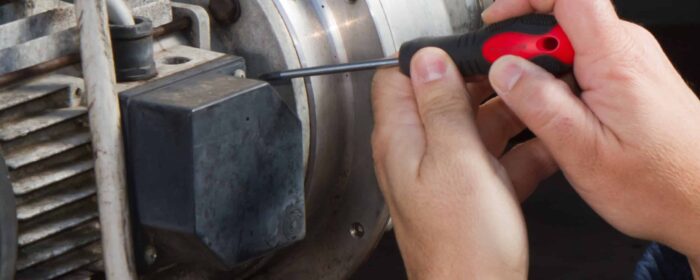
Chip wringers (also called centrifuges) are principal players in metal scrap processing and fluid recovery. By using centrifugal force to separate metal chips from cutting fluids, chip wringers produce drier chips that are more valuable to scrap dealers and also enable operators to recover spent cutting fluids that may be recycled and reused.
There are several things you should consider when investing in a chip wringer to ensure it captures return on invest and keeps ownership costs down. With that in mind, here are 3 areas where chip wringers can go wrong.
1. Fluid contact with seals and other components.
There are three main styles of chip wringers: those that are designed similar to top-loading washing machines, those where the bowl is oriented more like a front-loading washing machine, and those with a diagonal-shaft orientation (think of a top-loading washing machine tilted downward about 45 degrees).
In models with a top-loading orientation, it can be difficult, if not impossible, to evacuate all of the fluid from the system after operation. This can lead to spent fluid and small metal fines wearing the seal out prematurely. Not only does this increase seal replacement, it puts other components and assets at risk. If a seal failure goes undetected, this can lead to spent fluid and fines leaking into bearing housings, the motor, and onto the floor, creating both maintenance problems and possible safety issues. Systems that position the motor and bearings so they are separate from the bowl/drum unit will prevent contact with spent fluid altogether.
2. Insufficient materials of construction.
Appropriate bearing tolerances are critical for dependable long-term operation in heavy-duty wringer applications. Additionally, components such as screens, lids/covers and discharge housing may wear faster if they are not constructed of high-performance material. Manganese steel, which is known for its high-impact strength and abrasion resistance, provides greater durability than other types of steel. Utilizing wear-resistant materials in joints/corners that take extra abuse will help promote a long service life. Also, keep in mind that wringers are typically mounted on a stand or positioned inside a housing unit. Those supporting components need to also be built solid to withstand the severe vibration of the centrifuge.
3. Unnecessary manual maintenance and components are difficult to access for servicing.
Some wringers have optional auto lube systems that improve bearing performance and eliminate manual greasing. In addition, having easy access to motors and bearings for servicing is important. Take note of how high off the floor these components are and if they are housed inside a cabinet. Working on the floor in tight spaces is seldom comfortable or efficient.
To learn more about wringer design features that will impact day-to-day metal scrap processing operations and influence cost of ownership, it is advisable to consult with a trusted supplier of chip systems about the pros and cons of the various models of wringers that are on the market today.
For more information regarding PRAB, please visit prab.com or contact us.